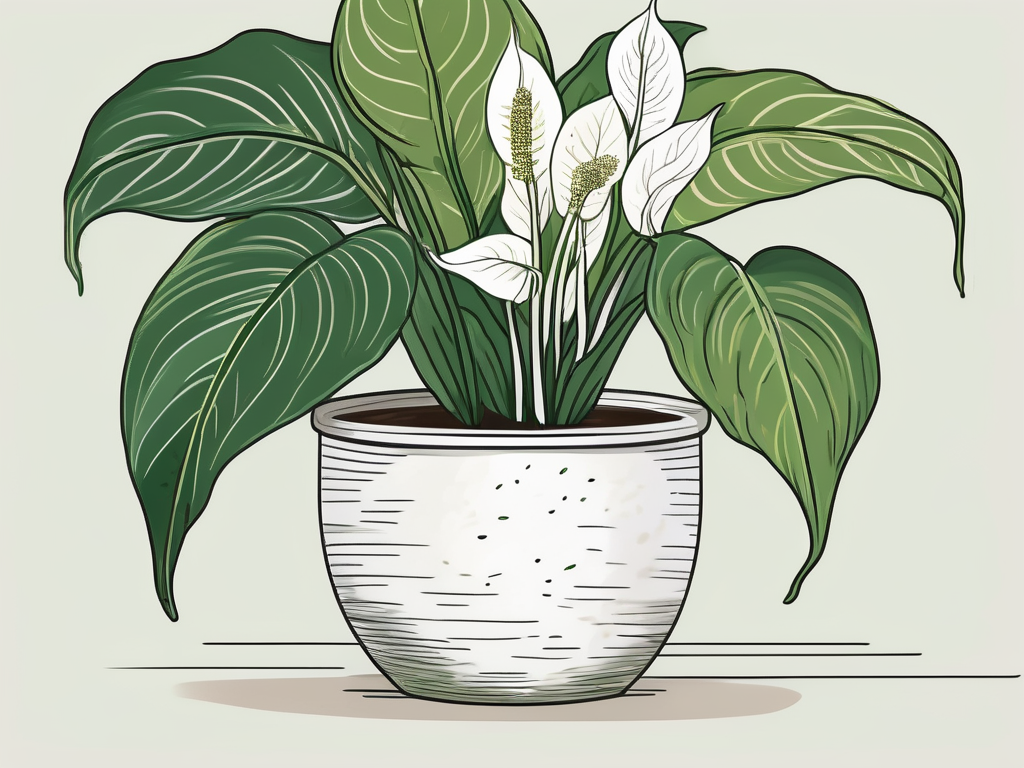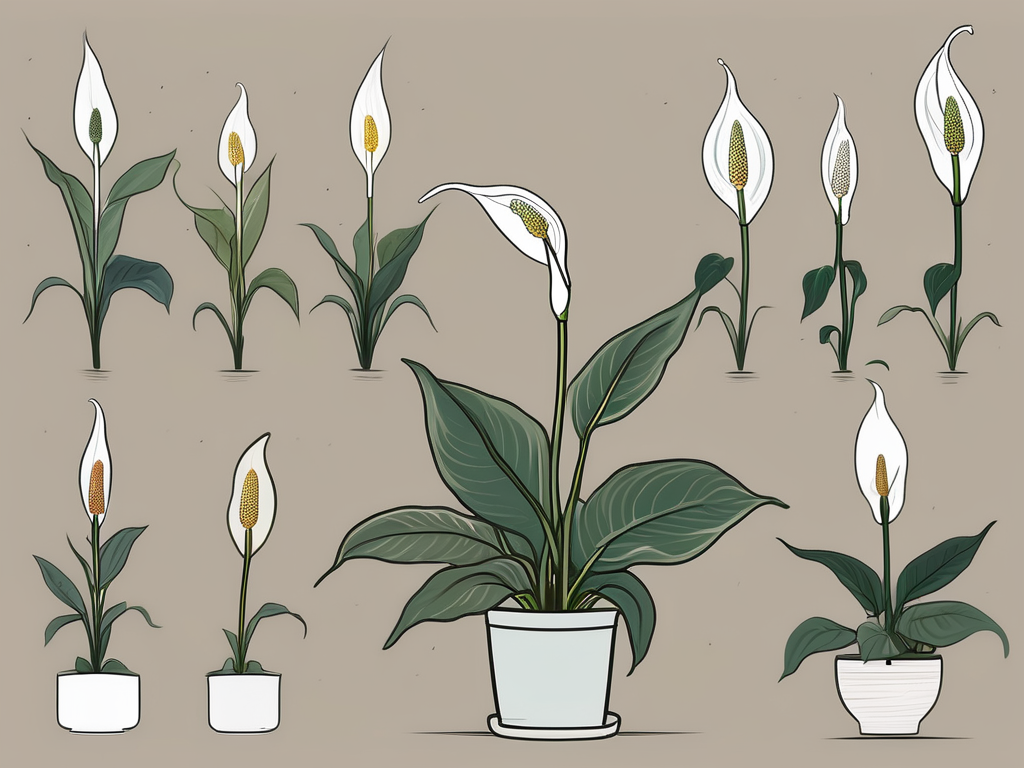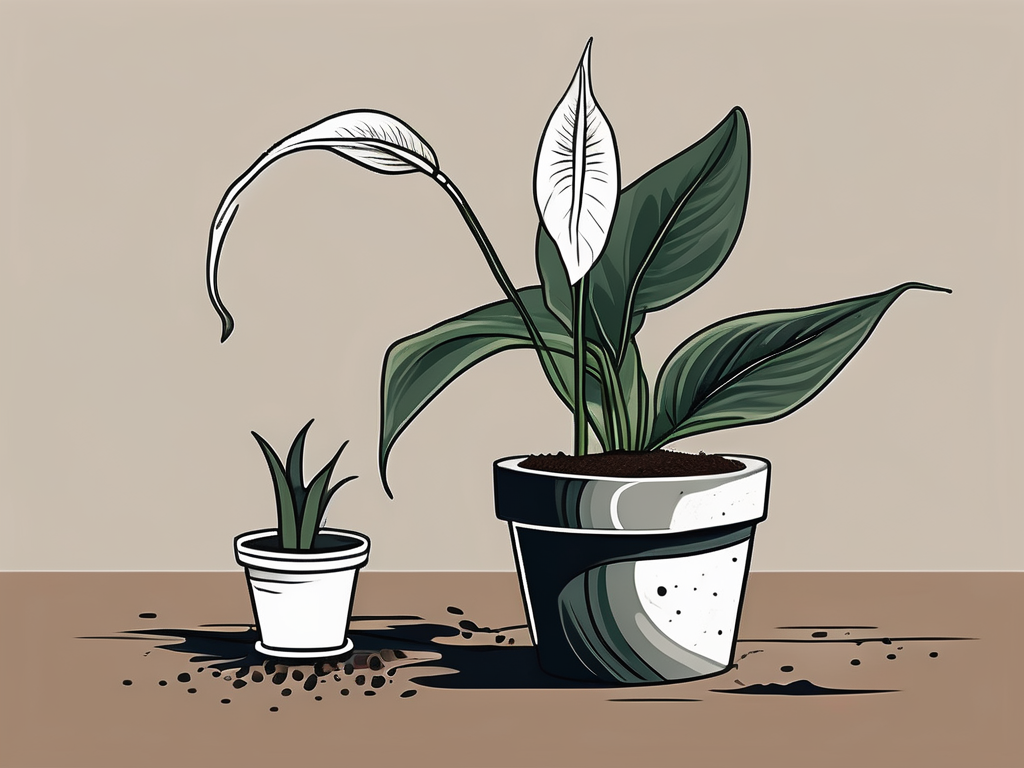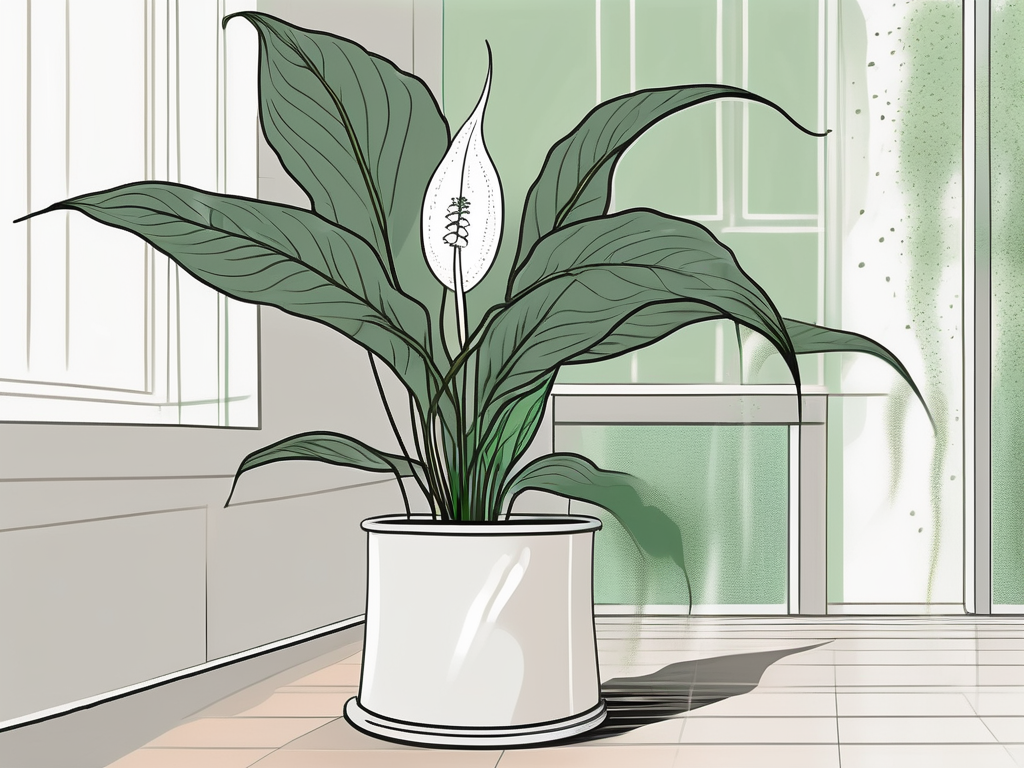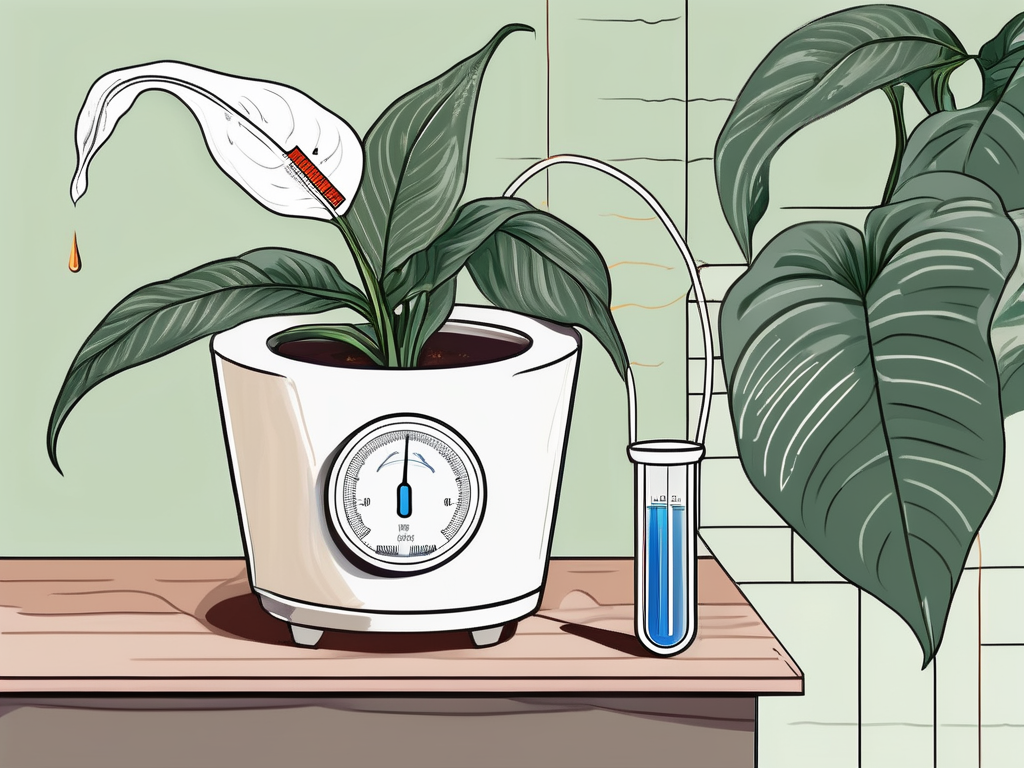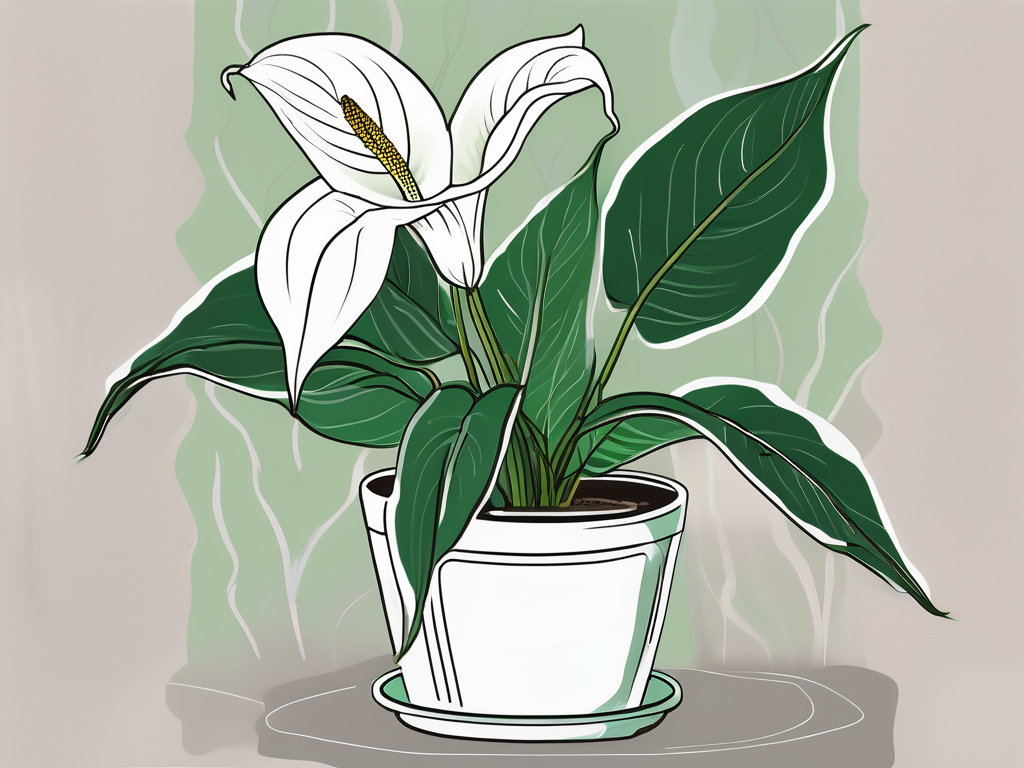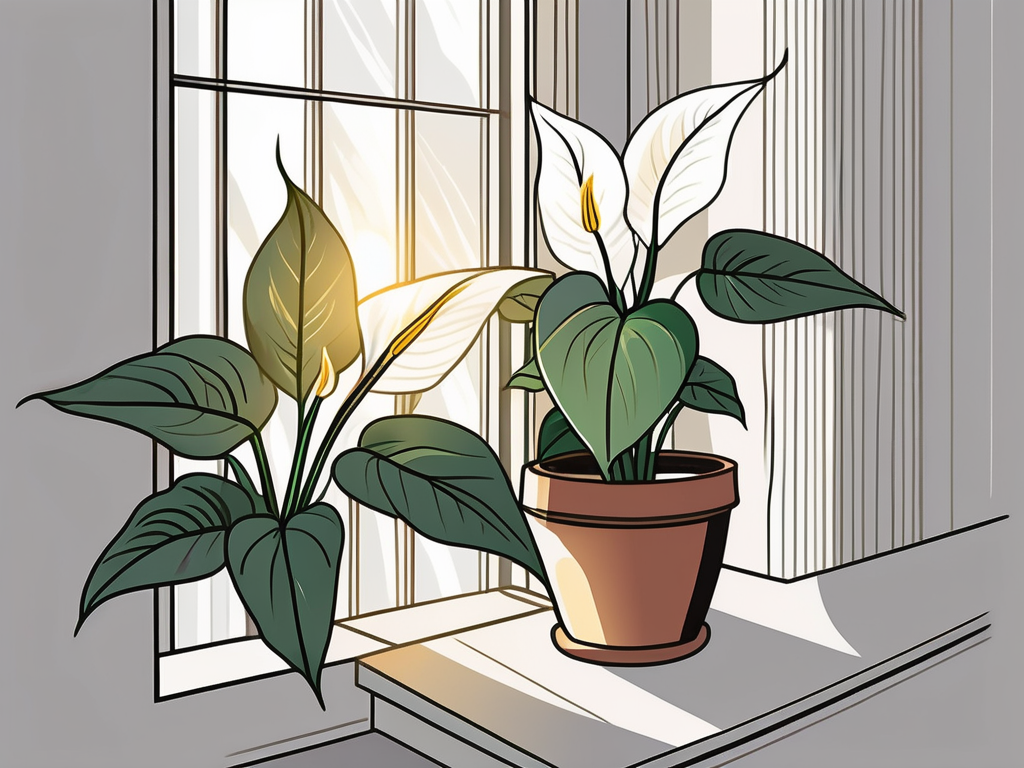
Peace lilies, with their glossy leaves and striking white blooms, have a knack for brightening up any room. They're popular not just for their beauty but also for their ability to thrive in less-than-ideal light conditions. However, understanding their light needs can make all the difference between a flourishing plant and one that's just surviving.
In this article, we’ll explore the lighting preferences of peace lilies, helping you create the perfect environment for them. From ideal light conditions to troubleshooting common light-related issues, you’ll gain a comprehensive understanding of how to keep your peace lily happy and healthy.
Understanding Peace Lily Light Preferences
Peace lilies are native to the tropical rainforests of Central and South America. In their natural habitat, they grow under the canopy of larger trees, receiving filtered sunlight. This environment provides clues to their light preferences as houseplants.
These plants prefer bright, indirect light. Imagine the soft dappled sunlight that filters through a sheer curtain—that's the kind of light peace lilies love. Direct sunlight can be too harsh, leading to scorched leaves, while too little light can result in fewer blooms and slower growth.
If you’re wondering where to place your peace lily, consider locations like:
- Near a north or east-facing window, where they can enjoy gentle morning light.
- In a spot where they receive filtered light through a curtain or shade.
- Under artificial lights, if natural light is insufficient.
The key is to avoid placing them in direct sunlight, which can be too intense and damaging. On the flip side, while peace lilies can survive in low-light conditions, they won't thrive or bloom as much.
Signs Your Peace Lily Needs More or Less Light
Like many plants, peace lilies have their way of communicating light needs. Paying attention to their signals can prevent common issues and ensure they stay vibrant and healthy.
Signs your peace lily needs more light:
- Slow growth or no new growth at all.
- Fewer blooms or no blooms, even with proper care.
- Leaves may turn a darker green as they strain to capture more light.
Signs your peace lily is getting too much light:
- Scorched or sunburned leaves, often appearing with brown tips or patches.
- Leaves may curl or become crispy, particularly at the edges.
- The soil may dry out quickly, leading to wilting or drooping.
Adjusting the light conditions can help address these issues. Move the plant to a spot with more or less light, depending on its signals, and monitor for changes. Remember, patience is key when adjusting your plant's environment.
Creating Optimal Indoor Light Conditions
Crafting the perfect lighting setup for your peace lily might seem challenging, but a few adjustments can make a big difference. Consider the following strategies to create an optimal environment:
Natural Light Adjustments
If you have windows with varying light conditions, experiment by placing your peace lily in different spots. North or east-facing windows generally provide the right amount of indirect light. If your only option is a south or west-facing window, use sheer curtains to diffuse the sunlight.
Artificial Light Solutions
Sometimes, natural light isn't enough, especially in spaces with limited windows. In these cases, artificial lighting can be a lifesaver. Here are some tips:
- Fluorescent Lights: These are a cost-effective option and can mimic the natural light peace lilies need.
- LED Grow Lights: These are energy-efficient and can be adjusted to provide the perfect spectrum of light for indoor plants.
Position your peace lily about 6 to 12 inches from the light source, and keep the lights on for about 12-14 hours a day. This mimics the natural daylight cycle and can help your peace lily thrive even in darker spaces.
Seasonal Light Changes and Adjustments
As seasons change, so does the light in your home. Understanding these shifts can help you make necessary adjustments to your plant's light exposure.
During winter, daylight hours are shorter, and light intensity decreases. You might notice your peace lily growing slower or producing fewer blooms. Consider moving it closer to a window, or increase the duration of artificial lighting to compensate for the reduced natural light.
In summer, the sun's intensity can increase the risk of direct sunlight exposure, especially near south or west-facing windows. Be sure to monitor your peace lily for any signs of sunburn or stress, and move it to a shadier spot if necessary.
It's a good practice to rotate your plant occasionally, ensuring all sides receive equal light exposure. This helps maintain even growth and keeps your peace lily looking its best year-round.
Common Myths About Peace Lily Light Needs
There are a few misconceptions surrounding peace lily care, particularly about their light needs. Let's debunk some of these myths to ensure you're providing the best care possible.
Myth 1: Peace lilies thrive in complete darkness.
While peace lilies are known for their tolerance to low light, they still need some light to grow and bloom. Placing them in complete darkness will lead to poor growth and no flowers.
Myth 2: More light equals more blooms.
It's easy to assume that more light will result in an abundance of blooms, but too much direct sunlight can actually harm your peace lily. The key is to find the right balance of bright, indirect light to encourage healthy growth and blooming.
Myth 3: Peace lilies can survive in any light condition as long as they're watered correctly.
While proper watering is crucial, light plays an equally important role in their overall health. Incorrect light conditions can lead to stress and make your plant more susceptible to pests and diseases.
By understanding the truth behind these myths, you can provide your peace lily with the ideal environment for thriving.
Balancing Light with Other Care Needs
Providing the right light is just one part of keeping your peace lily healthy. Balancing light with other care aspects, like watering, humidity, and temperature, creates a holistic approach to plant care.
Watering
Peace lilies prefer consistent moisture without being waterlogged. Allow the top inch of soil to dry out before watering. If your plant is in a brighter spot, it might require more frequent watering. Conversely, in lower light, less water is needed.
Humidity
These tropical plants thrive in humid environments. If your home is dry, especially in winter, consider using a humidifier or placing a tray of water near your plant to increase humidity.
Temperature
Peace lilies appreciate warm temperatures, ideally between 65-85°F (18-29°C). Avoid exposing them to drafts or drastic temperature changes, which can cause stress.
By considering these factors alongside light needs, you can create a nurturing environment that supports your peace lily's overall health and vitality.
Troubleshooting Light-Related Issues
Even with the best intentions, your peace lily might encounter some light-related challenges. Here’s how to troubleshoot common issues:
Wilting or Drooping
If your peace lily appears wilted, it could be a sign of insufficient light or overwatering. Check the soil moisture and adjust your watering routine. Ensure the plant is receiving enough indirect light.
Brown Tips or Edges
This is often a sign of too much direct sunlight or low humidity. Move your plant to a spot with less direct light and increase humidity levels by misting or using a humidifier.
Yellow Leaves
Yellowing leaves can indicate a range of issues, including too much light, poor drainage, or nutrient deficiencies. Evaluate the plant's environment and care routine to identify and address the root cause.
By keeping an eye on these signs and making adjustments as needed, you can help your peace lily overcome light-related challenges and continue to thrive.
Integrating Peace Lilies into Your Home Design
Beyond their care needs, peace lilies can play a significant role in your home’s interior design. Their elegant appearance and air-purifying qualities make them a valuable addition to any space.
Consider the following ideas for incorporating peace lilies into your home decor:
- Entryway: Place a peace lily near your home's entrance to welcome guests with a touch of greenery.
- Living Room: Use peace lilies to fill empty corners or complement existing decor. Their striking white blooms can add a focal point to any room.
- Office Space: Peace lilies are known for their air-purifying abilities, making them perfect for workspaces. They can help create a calm and productive environment.
By strategically placing peace lilies throughout your home, you can enjoy their aesthetic beauty and wellness benefits, all while creating a harmonious and inviting atmosphere.
Final Thoughts
Understanding the light needs of peace lilies is crucial for their health and happiness. By providing the right balance of indirect light, adjusting for seasonal changes, and balancing other care aspects, you can enjoy a thriving peace lily that adds beauty and serenity to your home.
At Cafe Planta, we're passionate about helping you care for your plants. Whether you're looking for a new peace lily, plant care accessories, or some stylish plant-themed apparel, we've got you covered. If you have questions about plant care, don't hesitate to email us or send a message on Instagram. Let's nurture your love for plants together!













